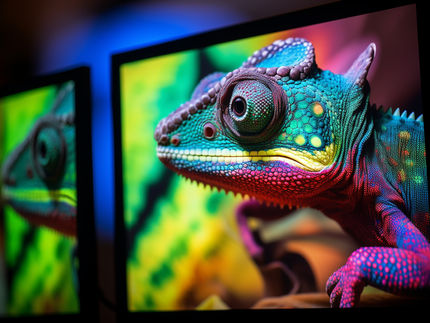Merck to lead OLED research
Launches joint project to conduct basic research on quantum materials as light sources
Merck, a leading science and technology company, is announcing its leadership role in the joint project entitled “Exploration of quantum materials – New paths to realizing innovative optoelectronic components (ELQ-LED)”. The aim of the project, which will receive total funding of € 5.5 million from the German Federal Ministry of Education and Research (BMBF), is to develop quantum materials for innovative applications in the display and lighting industries. The total budget of the project amounts to € 9.1 million.

pashminu; pixabay.com; CC0
Basic research for light of the future
Modern light sources such as organic light-emitting diodes (OLEDs) must satisfy stringent requirements: high image quality and extremely slim, highly energy-efficient designs. With quantum materials as emitters, these advantages are now to be further exploited while simultaneously reducing costs and optimizing color spectra. The resulting innovative component utilizing the quantum materials is called an electroluminescent quantum materials-based light-emitting diode (ELQ-LED). Quantum materials feature even greater color intensity, which can be controlled by the particle size. The toxic metal cadmium is deliberately not being used in the development of materials in order to preserve the safety of OLEDs.
“ELQ-LEDs represent a systematic refinement of OLEDs and offer great potential for synergies between OLED and quantum materials,” says Michael Grund, Head of OLED and Quantum Materials at Merck.
Merck, OSRAM OLED, the Fraunhofer Institute for Applied Polymer Research, the University of Augsburg, Ludwig Maximilians University in Munich, and Carl von Ossietzky University of Oldenburg have joined forces as partners along the organic electronics value chain in order to demonstrate the basic applicability of quantum materials in lighting. In addition to conducting research on quantum materials, the partners plan to test and develop components, processes, matrix materials, transport materials, and inks following the comprehensive approach. All components are to be completely printable to save resources during production. The printed parts are being tested in display and automotive tail light demonstrators. The research project is scheduled to run for three years, ending in summer 2020.
Most read news
Topics
Organizations
Other news from the department science

Get the chemical industry in your inbox
From now on, don't miss a thing: Our newsletter for the chemical industry, analytics, lab technology and process engineering brings you up to date every Tuesday and Thursday. The latest industry news, product highlights and innovations - compact and easy to understand in your inbox. Researched by us so you don't have to.





























































